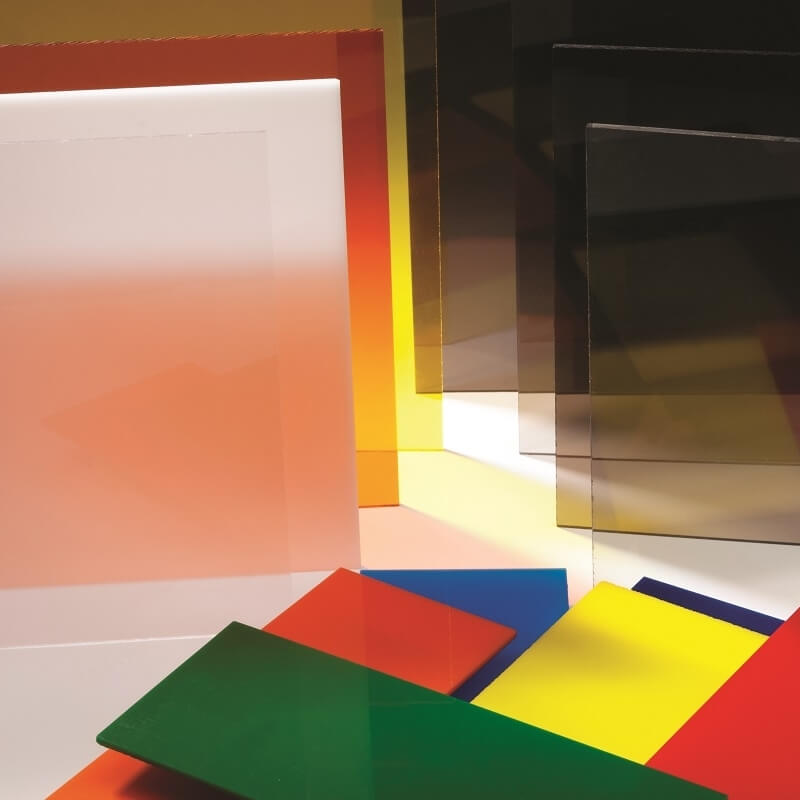What You Need to Know About Acrylic

Acrylic is one of the most recognizable names in the world of plastics -- and for good reason. It has many different applications and is one of the more durable and versatile products available. It's often sold in sheets of transparent material that can take the place of windows or provide protection in a variety of instances. Businesses, industrial facilities, government buildings, and even individuals can all benefit from using acrylic in buildings or smaller scale projects. However, it's just one of many thermoplastics and synthetic materials that are available.
To make sure that you choose the right material for your own needs, it's important to understand all of the specific qualities as well as the pros and cons of acrylic. Here's a guide to help you get started and make the best possible choice for your next project.
What Is Acrylic?
Acrylic is a thermoplastic, which means that it can be melted into a liquid in order to shape it into a specific form. This process is called injection molding. And it involves liquefying the acrylic material and injecting it into a mold that's the shape of the sheet or pane you want to create. Then it is cooled, which allows it to turn back into a solid. It can also be melted and molded multiple times without losing its physical properties, which makes it a prime candidate for being recycled.
It is also sometimes referred to as plexiglass or acrylic glass since it is meant to mimic the look of glass. However, the material is known for being lightweight, clear, and fairly impact resistant. So it actually offers plenty of benefits over glass when weight or safety is an issue.
There are also some unique qualities that set acrylic apart from other plastic materials like polycarbonate or PETG. For instance, it tends to be fairly scratch resistant, since it includes a consistent surface throughout. And if there is an issue that causes a chip or imperfection, the surface can easily be polished to restore shine and clarity. Additionally, acrylic offers exceptional visual clarity, whereas many other plastics can have a tint or a bit of translucence instead of full transparency.
What Can Acrylic Sheets Be Used for?
Because of its strength, durability, and minimal weight, acrylic is often used as a replacement for glass. In building exteriors, this can include windows, doors, skylights, and glass inserts. It is also popular in interiors, including glass front cabinets, lighting, and even kitchen backsplashes. In fact, there are additives available to turn acrylic sheets into colorful panes that are still fairly transparent. So this can help homeowners and businesses create a truly unique and personalized look.
In commercial settings, acrylic tends to be especially popular in a variety of retail applications. For instance, it is often used in protective countertop systems that provide a barrier between staff members and the public. It can also be used in display cases made to protect valuable products. Finally, businesses can add color or print designs onto the sheets to create signage for both indoor and outdoor use.
Are There Pros and Cons of Using Acrylic vs Polycarbonate?
Acrylic and polycarbonate have many of the same features and quality. They're both basically transparent and made of synthetic plastic materials. They're both also more lightweight and impact resistant than glass, making them popular in many of the same impact resistant applications.
However, polycarbonate is generally considered to be stronger than acrylic when exposed to high impact like debris from severe storms or ballistic rounds. Since the material is a bit more flexible at room temperature than acrylic, it's able to absorb the extra energy from high impact and spread it out more effectively. This makes it a more popular choice for protective windows and systems, though acrylic is still better suited to this task than traditional glass. Polycarbonate is also more ideal in certain industrial and commercial applications where it might be exposed to high heat or chemicals, since acrylic can melt and degrade in those instances.
However, acrylic is usually preferred in instances where high visibility is necessary, since it's more clear than polycarbonate, which can have a bit of a tint to it and can also yellow when exposed to UV rays. It's also lighter, which makes it perfect for everything from vehicles to clear visors on sports helmets where weight is an issue. Finally, acrylic tends to be a bit more affordable than polycarbonate, since it's readily available and easy to recycle and customize.
Overall, both of these materials offer plenty of benefits for a variety of applications. So you simply need to consider your own specific needs and budget in order to determine which option is best suited to your project.
How Can We Help?
If you're interested in purchasing acrylic, polycarbonate, or basically any other type of plastic sheeting, check out the extensive selection from Sheet Plastics. We offer a wide array of plastic sheeting and other solutions for individuals and businesses alike. You can use our products for everything from protective windows to business signage. In addition to acrylic sheets, we also offer polycarbonate, corrugated plastics, PETG, foam board, PVC, and much more. To purchase or learn more about the qualities and benefits of acrylic sheets, visit our website or get in touch with a member of our friendly team. We can also help you customize your plastic products by cutting to size or guiding you to the plastic solutions that suit your specific needs.







